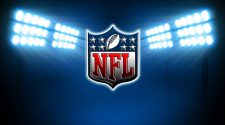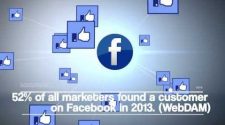In the share-crazy, real-time culture of the digital age, printing services for traditional business collateral like business cards can seem obsolete. But modern networking still includes face-to-face conversations and accommodates classic communication manners that serious people convey — no matter how they meet someone — with things like a firm handshake, handwritten notes and business cards.
And really, in most cases, potential customers, business associates, partners and other types of people with whom you network at events, conferences, training programs and other physical settings will see your logo and otherwise experience your company for the very first time when they look at your business card. Your card is also what gives them the information they need to learn more about you, your business and the products you sell.

That’s why you need to make sure your business card includes all the pertinent information your contacts need to explore your offerings and connect with you later. And to improve the odds that they’ll actually want to get in touch, invest in professional cards that present your company as a serious and stable entity. After all, the point of networking is to connect with other people to develop mutually beneficial relationships.
Making Contact and Inviting Follow-up
Providing information that enables your contacts to reach you and learn more about your business, make sure these details are on your business card:
- Personal name
- Business name and logo
- Primary phone number
- Email address
- LinkedIn profile URL
- Facebook Page
- Twitter handle (if applicable)
Unless your business relies on faxes and has a confusing or difficult-to-find domain (that’s not included in your email address for some reason), feel free to eliminate your fax number and website address in order to keep your card clean and as uncluttered as possible. This means using a font that’s easy to read and avoiding distracting design elements on your card.
Getting Personal
To strengthen your credibility as a serious professional — to make yourself as appealing as possible to your new contacts — your business card should convey your company identity in a way that reinforces your other marketing initiatives and information platforms, including your website and social media pages. A strong cohesive brand makes a great impression.
But don’t mistake these tactics for the end game. Branding initiatives and social media engagement, like other new and old marketing efforts, are simply tools for initiating, maintaining and strengthening personal relationships. Because the fact is, multi-platform branding — with great colors, appealing fonts, compelling messaging and maybe even a snappy jingle — is great, but conversations, personal compatibility and authentic relationships are usually the factors that close sales. Even seasoned businesspeople in every industry get dazzled by the new and shiny tools and overlook the fundamental role of personal engagement in the business process.
So keep it real. Hand your contacts a well-considered and professional business card that contains your best information platforms and contact information when networking. This is a great way to start the conversation; use other relationship-building tools to further develop your appeal and sell your products.
















Hiring a Web Designer: Do’s and Don’ts